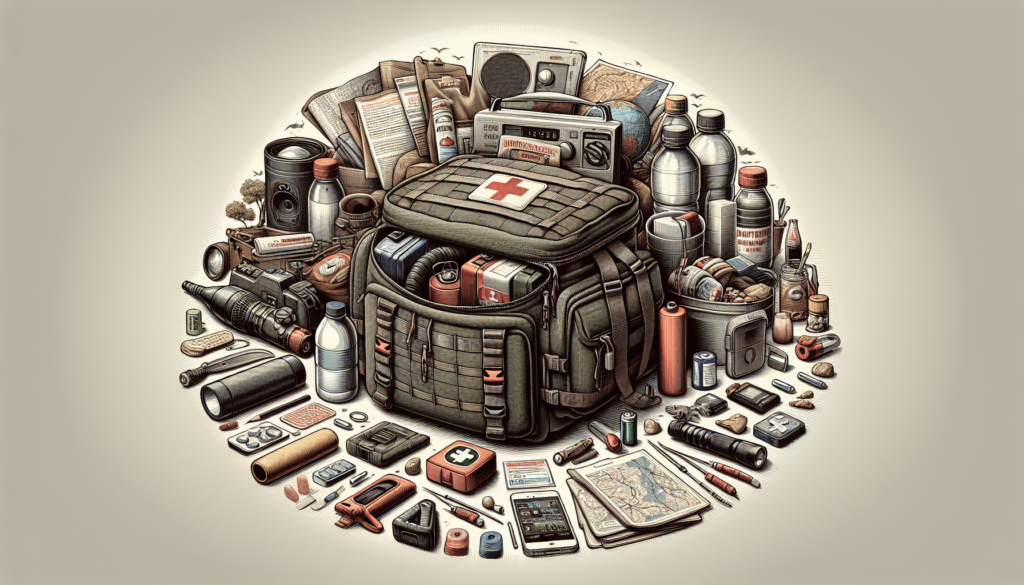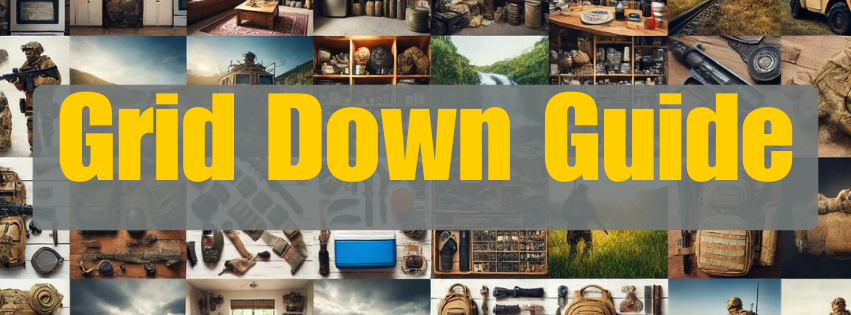
Have you ever wondered what we should have on hand when nature decides to throw a tantrum? We think about it too—especially when the wind howls louder than a Led Zeppelin concert and the world feels like it’s shaking us up like a snow globe. It’s a scene straight out of a thrilling novel, but honestly? We prefer to keep it fiction. Having the right emergency kit stashed away can be the key to flipping the script from panic to preparedness. So, let’s chat about how to build an emergency kit that won’t let us down during a natural disaster.
Before we begin, let’s get cozy with the idea of what we’re trying to achieve: a practical collection of essentials that’ll support us, physically and mentally, in our time of need. Think of it as a tidy treasure trove of tools for survival and sanity, waiting patiently in a corner until it’s called upon.

Understanding Why We Need an Emergency Kit
We often hear about emergency kits, but have we really thought about why they matter? Natural disasters can sneak up on us like a cat on the hunt. Whether it’s an earthquake, flood, tornado, or even a blizzard that turns our neighborhood into a winter wonderland minus the fun, these events remind us of the fragility of normal life. Our shiny gadgets, comfy couches, and overflowing fridges suddenly seem frivolous when the power’s out, the water’s murky, and the Wi-Fi is nothing but a fleeting memory. Planning out an emergency kit is akin to writing a love letter to Future Us: “Hang tight, you’ve got this.”
Basic Items: The Must-Haves
Alright, let’s get to the nuts and bolts of the thing. Every emergency kit should have some fundamental items. Consider these the bread and butter, the peanut butter and jelly, or whatever combo makes your life tick.
Food and Water
Whatever disaster strikes, we can’t really afford to ignore the basics—our tummies. Let’s think about easy-to-store, non-perishable foods that could keep us fed for at least three days. And water? A gallon per day per person. Let’s make sure we’re not just thirstily eyeballing our empty water bottles when we should be staying hydrated.
- Food: Canned goods, protein bars, dried fruits, nuts, and other easy-to-store snacks.
- Water: As much as we can reasonably store, ideally one gallon per person per day.
First Aid Kit
Bumps, bruises, and beyond, it’s all part of the dramatic natural disaster package. But, we want to be the stars of our own show, not sidelined by minor injuries. A good first-aid kit should cover everything from a small nick to a slightly more concerning gash.
- Basic supplies: Bandages, antiseptic wipes, tweezers, pain relievers, thermometer.
- Personal medications: A supply of prescription medications and a list of medical information.
Tools and Supplies
We can’t just wing it through a disaster; we need tools as our trusty sidekicks. Think utility and multi-purpose when planning our emergency toolkit.
| Item | Purpose |
|---|---|
| Flashlight | Light in the darkness; essential for safety and finding things |
| Extra batteries | Keeps the flashlight, radios, and other devices alive |
| Multi-tool or knife | For cutting, opening cans, and other tasks |
| Duct tape | Quick repairs and sealing things |
| Whistle | Signaling for help if needed |
Clothing and Personal Items
When it comes to staying warm or protecting ourselves from the elements, clothing isn’t just about fashion. Let’s pack some practical items to keep ourselves as comfortable as possible when comfort is hard to find.
- Clothing: Extra set of clothes suitable for the weather, sturdy shoes, gloves, and a hat.
- Blanket or sleeping bag: Staying warm could mean the difference between shivering and shoring up our resilience.
Communication Tools
In the throes of a natural disaster, staying informed is half the battle. Ensuring we have the means to keep abreast of developments gives us the power to make smart, timely decisions.
Battery-powered or Hand-crank Radio
Let’s be real: during a disaster, we can’t count on the internet going strong. A trusty battery-powered radio is our best buddy for news, emergency alerts, and updates. Imagine it as one of those retro tunes we turn to in nostalgia, only it’s more about saving our skins than singing along.
Mobile Phone and Charger
Our phones: tiny rectangles of life connectedness. It’ll be the lifeline for reaching out to family, emergency contacts, or first responders. But let’s think ahead! A solar charger or power bank could be a lifesaver.
Personal Needs and Sanitation
Okay, so maybe it’s not glamorous, but let’s not ignore hygiene. Nature might be kicking up a storm around us, but there’s no need for things to get grizzly on the personal front.
Hygiene Supplies
Who knew hand sanitizer could be such a star in the apocalypse? Keeping our hands clean is the first line of defense against illness.
- Sanitation items: Soap, hand sanitizer, wipes, a couple of small towels.
- Personal items: Toothbrush, toothpaste, and for some, feminine hygiene products.
Sanitation Supplies
Ah, the less-than-glamourous tasks. Let’s talk portable toilets or, at the very least, a makeshift solution with some garbage bags and cat litter. It’s about preserving a little dignity—and everything that comes with it.

Important Documents and Money
We all love a good digital document cloud, but let’s not lose sight of the real paper when it counts.
Copies of Important Documents
Let’s say we’ve got a binder filled with copies of birth certificates, insurance policies, and identification cards. This precaution seems dull, but when life demands our credentials, we’ll be thankful we took the time.
Cash and Coins
ATMs become big, dull boxes that refuse to spit out our money when there’s no power. Cold, hard cash is not just for bygone eras; it could be our ticket to vital goods if the power’s out.
Special Considerations
Sometimes, life hands us unique challenges or joys. Pets, power needs, dietary quirks—they shape how we go about preparing our kit.
Pet Supplies
Our furry companions count on us to think of them, even when the chips are down. Along with food and water, let’s pack a leash, a pet carrier, and maybe a favorite toy for comfort.
Considerations for Children and the Elderly
Little ones and those with a few more years than us could need extra TLC. Diapers, formula, special foods, or devices that ensure mobility and safety are top of mind.
Reassessing and Updating the Kit
Here’s a kicker: our emergency kit shouldn’t gather dust. It’s not good enough to stock it once and forget about it like it’s last year’s fad. Setting seasonal reminders in our calendars to check expiration dates and restock supplies is a proactive approach we can take.
Putting It All Together and Storage
Once we’ve gathered our arsenal, the next step’s about making sure it’s easily usable when the time comes. Let’s find a sturdy, waterproof container for storage—a tough, practical suitcase or backpack will be our go-to.
Choosing the Right Spot
Location matters. Think accessible—but not intrusive. The storage spot should be known to everyone in the household, not somewhere we need to rappel down to or unearth from the deepest, dark recesses of our closet.
Making a Family Plan
None of this matters if we haven’t huddled up with our own and come up with a plan that includes using the kit. When the earth trembles, there’s comfort in knowing that as a team, we’ve hashed out our options for meeting up, contacting each other, and generally surviving together.
Final Thoughts
We hope this cozy fireside chat, minus the fire hazard, about filling our emergency kit has sparked a bit of proactive thinking in all of us. Maybe we’ll sleep a touch easier knowing that our pantry isn’t the only thing standing between us and hunger when the skies darken.
This isn’t just preparing to face the music, it’s about keeping our heads when everyone else might lose theirs. Now that our kit’s squared away, we can turn our attention back to more pleasant pursuits—like finding a plot twist that keeps the disaster safely within the pages and off our doorstep.
